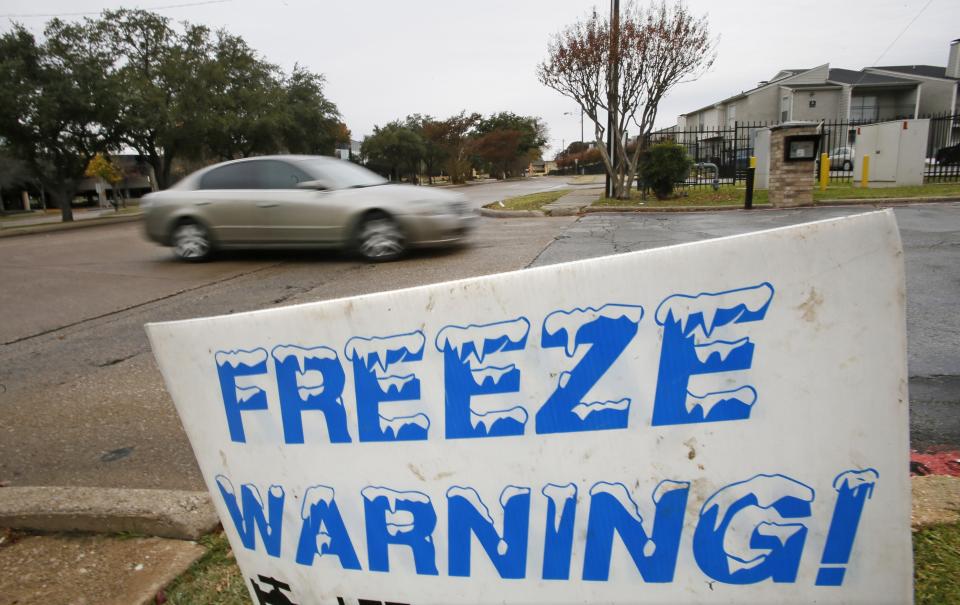Preventing climate change is hard, preparing for it is easy
The infrastructure discussion has evolved (or devolved) into a debate about what that clunky four-syllable word means. Whatever it is, “crumbling” is the wrong way to describe it. The correct word is obsolete. The infrastructure we have reflects the climate and values of 1950. Instead of being rebuilt, it must be reimagined.
President Joe Biden’s 10-year, $2 trillion American Jobs Plan pledges that every dollar spent on rebuilding “will be used to prevent, reduce, and withstand the impacts of the climate crisis.” The plan also promises “$50 billion in dedicated investments to improve infrastructure resilience.”
SUBSCRIBE: Help support quality journalism like this.
This emphasis on withstanding impacts is exciting, because U.S. climate policy has been lopsided for a long time, focusing on preventing greenhouse gas emissions while doing very little to prepare for the extreme weather that is both coming and already here.
We are in for more bad weather
The effects of climate change have often been conflated with inadequate and shortsighted planning. The collapse of the Texas power grid in February – when a cold snap left millions of people without power for weeks, contributing to at least 40 deaths – was not a climate change problem. It was an infrastructure problem.
It’s easy to build structures that can withstand colder temperatures or larger storms or higher seas. It’s hard to persuade people to do things differently, to stop driving cars or stop eating meat. And the latter approach hasn’t worked very well.

It is theoretically possible to reverse climate change, if humans make a monumental commitment to changing their economies. But even if the whole planet stopped emitting heat-trapping gasses today, the earth would continue to warm for a few decades before its temperature stabilized and eventually declined.
In reality, we’re in for a lot more bad weather. And we’re not prepared for it.
In the early spring of 2019, the Missouri River basin was deluged with about 61 million acre feet of water, enough to cover New York, Connecticut and New Jersey a foot deep.
Levees blew out or were overtopped across three states, causing over $3 billion in damages. Whole towns were wiped out, several people drowned. Yet much of this destruction death was preventable.
The original plan for damming and diking the Missouri called for levees set much farther apart. However, many farmers objected to leaving so wide an arable swath vulnerable to the river’s whims. The Army Corps of Engineers, which manages the Missouri River, had little recourse when farmers built their own levees much closer to the river than the engineers thought wise. Though this hodgepodge system was repeatedly overwhelmed, it was rebuilt again and again.

The largest flood ever to come down the Missouri, at 61 million acre feet, occurred in 2011. After it receded, engineers with the Corps’ Omaha District proposed widening the Missouri River’s floodway by moving levees back from the river. It was, after all, basic hydrology: The wider a river channel, the more water it carried, and the lower its flood would crest.
Infrastructure: Biden builds solid infrastructure proposal, but hard questions remain on American Jobs Plan
It was the perfect moment for fresh thinking, because what was in place had just been destroyed. The Omaha engineers thought the valley’s farmers might be persuaded to return some land to the river in exchange for better protection from its periodic excesses. The levee setbacks, said the engineers, would end an expensive and traumatic cycle of destruction and reconstruction.
Yet the locals refused. They couldn’t afford it. Besides, watching tillable ground revert to forest and weeds is a moral affront to a farmer. Where an ecologist sees biodiversity, a farmer sees waste and lost opportunity.
The Corps could have acquired the land by invoking eminent domain, but as John Remus, an engineer who worked on the plan told me, “We’re not going to go there. It’s political suicide. We haven’t even gone there and it’s still kind of political suicide.” The levees were rebuilt almost exactly where they were before the 2011 flood, and they are being rebuilt now.
February's Texas deep freeze was not unique, either. It was similarly cold in 1989, 1962, 1930 and 1889. Thrice in a century is by no means unlikely. The Missouri River levees are being breached with about the same frequency. And this is without considering that extreme weather is more common now than a century ago.
Minimizing fires and floods coming
Wildland fires in the American West are the result of another tragic lack of preparation. The risk of large fires can be greatly reduced through controlled burning, and by removing smaller trees and underbrush. This would be expensive and politically sticky now, but in the long term it would save lives, homes and forests, and prevent carbon dioxide from going into people’s lungs and the atmosphere.

There were 22 weather events in 2020 that caused $1 trillion in total damages. No matter how we define infrastructure, the United States will continue to suffer massive and repeated losses if we don’t prepare for life in a changed climate.
When the news cycle has moved on, and the minutiae of this long-awaited bill are being argued over in Congress, we must remind our leaders that doing what we know works to minimize fire and flood damage today is just as important as reducing emissions to minimize the fires and floods of tomorrow.
Tyler J. Kelley is a journalist who has written for The New York Times, The Wall Street Journal and The New Yorker among other publications. His first book, "Holding Back the River," was just published.
You can read diverse opinions from our Board of Contributors and other writers on the Opinion front page, on Twitter @usatodayopinion and in our daily Opinion newsletter. To respond to a column, submit a comment to letters@usatoday.com.
This article originally appeared on USA TODAY: How to face and prepare for climate change

